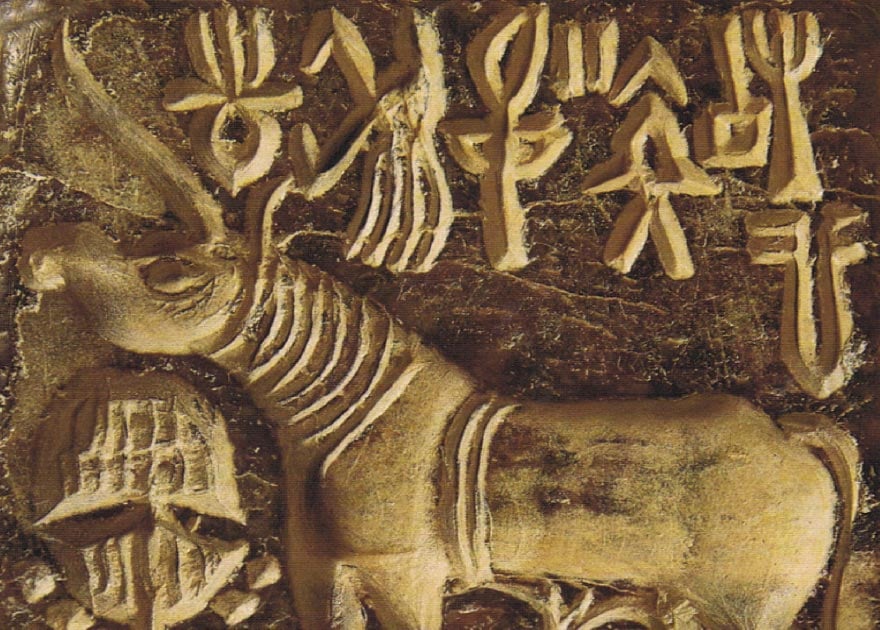IT Guru Unlocks Secrets of Ancient Indus Script
The Indus Valley civilization, also known as the Harappan civilization, was the earliest known urbanized ancient culture that emerged on the Indian subcontinent between 2500–1700 BC, and according to Britannica.com, southern sites may have lasted later into the 2nd millennium BC.
The civilization consisted of two large administrative cities, Harappa and Mohenjo-daro, and more than 100 towns and villages, and the act of deciphering ancient Indus inscriptions has a very long list of attempts and an equal-sized list of failures, with thousands of scholars having tried. However, a young IT professional from Bengal, Bahata Angshumali Mukhopadhyay, was intrigued with the idea of unraveling Indus inscription, and according to an article on Get Bengal, she has 'emerged victorious.’

Indus sign-classes along with the list of their member signs. (Bahata Angshumali Mukhopadhyay)
Ancient Words and Pictures
Ms. Bahata’s research paper was published in Palgrave Communications, a Nature group journal, and it says most of the Indus Valley inscriptions recovered so far were written logographically using word signs and not with units of speech sounds called phonograms. This, the researcher claims, can be compared to the structured messages observed on ‘stamps, coupons, tokens and currency coins of modern times.’
According to Bahata, various kinds of study processes are required to gain an understanding of Indus inscriptions, but most of them are ‘not falsifiable according to science,’ and she described her methods as ‘an interdisciplinary manner of classifying symbols.’ And even with a fair share of critics, the researcher boldly presented her research, confident that her work will make the entire process of decoding Indus inscriptions ‘simpler and easier.’ And her new work has been recognized as ‘the finest possible in recent times’ by the paper reviewers on Nature.
- Decoding the mysterious ancient Indus Valley script will shed light on powerful ancient civilization
- The Extensive Indus Valley Sites of Gujarat
- Did Celts Create the IBERO-GUANCHE Writing of the Canary Islands?

Mohenjo Daro, an Indus Valley archaeological site. An IT professional thinks she’s discovered a secret to deciphering the Indus script. Source: Aleksandar /Adobe Stock
Analyzing the Brevity of Ancient Indus Script
Ms. Bahata told The Hindu that her breakthrough began after she used a ‘digitized corpus of Indus inscriptions’ which had previously been compiled by the well-known epigraphist and Indus script scholar, Iravatham Mahadevan. Using computational analyses and various interdisciplinary measures the scientist looked at the ‘brevity of the inscriptions, the rigid positional preferences maintained by the signs of the inscriptions, and the co-occurrence of restriction patterns demonstrated by certain classes of Indus signs.’
In the publication, the author says that the inscribed seals and tablets were used in an ‘administrative operation that controlled the commercial transactions prevalent in the trade-savvy settlements of the ancient Indus valley Civilization’ and that these inscriptions can be compared to the messages found on stamps, coupons, tokens and currency coins of modern times. She describes these medias as formulaic texts that encode a certain type of information in pre-defined ways, ‘rather than freely composed narrative.’

Susa seal with Indus signs. (CC BY SA 2.0)
Breaking Rules That Don’t Hold Water
The current most popular hypothesis maintains seals were inscribed with Proto-Dravidian or Proto-Indo-European ‘names of the seal-owners’ but this, according to the researcher, simply ‘does not hold water.’ Many scholars, according to the author, assume Indus script is ‘logo-syllabic’ where one symbol can be used as a word sign at one time, then as a syllable-sign in another instance.
This method, where a word-symbol is also used for its sound value is called the ‘rebus principle.' The paper offers the analogy of combining ‘pictures of a honey bee and a leaf to signify the word “belief” (bee+leaf) and according to Ms. Mukhopadhyay, while many ancient scripts use rebus methods to generate new words, the inscriptions found on the Indus seals and tablets ‘have not used rebus as the mechanism to convey meaning.’
- Do You Have the Magic Touch? Chicago Library Appeals to Public for Help Transcribing Magical Manuscripts
- Tamils and Sumerians Among the FIRST to Reach Australia and Antarctica? PART I
- The Ancient Origins of Some Dead or Dying Languages
Indus Signs are Not Phonograms, Okay?
While Ms. Mukhopadhyay’s research is indeed groundbreaking she is far from the first IT specialist to tackle the encoded ancient script and according to a 2009 Live Mint article, a team of Indian scientists published a paper in Science journal claiming the Indus script had ‘a structured sign system showing features of a formal language’. And just like Ms. Mukhopadhyay, this team applied ‘mathematical and computational methods and tools’ showing the script has ‘well-defined signs, which begin and end texts, with strong correlations in the order in which the signs appear.’
This was regarded as ‘the first evidence’ supporting the controversial hypothesis that the script represents an ‘as-then-unknown’ language, said co-authors Nisha Yadav and Mayank N. Vahia from the Tata Institute of Fundamental Research and Centre for Excellence in Basic Sciences in Mumbai. And that conclusion dovetails with the findings of Ms. Mukhopadhyay, who in the Nature article concluded that the ‘most important contribution of this study’ is that Indus signs will no longer be treated ‘as phonograms’ in order to spell out words. Her second research paper is being reviewed presently and is set to be published later this year.
Top Image: Indus Valley seal found at Mohenjo Daro with script (Peter / Flickr)
By Ashley Cowie




















Comments
Thank you so much for communicating my research results to a bigger audience. This is a very well written piece. I would keep you posted regarding my upcoming papers.
Bahata Ansumali Mukhopadhyay